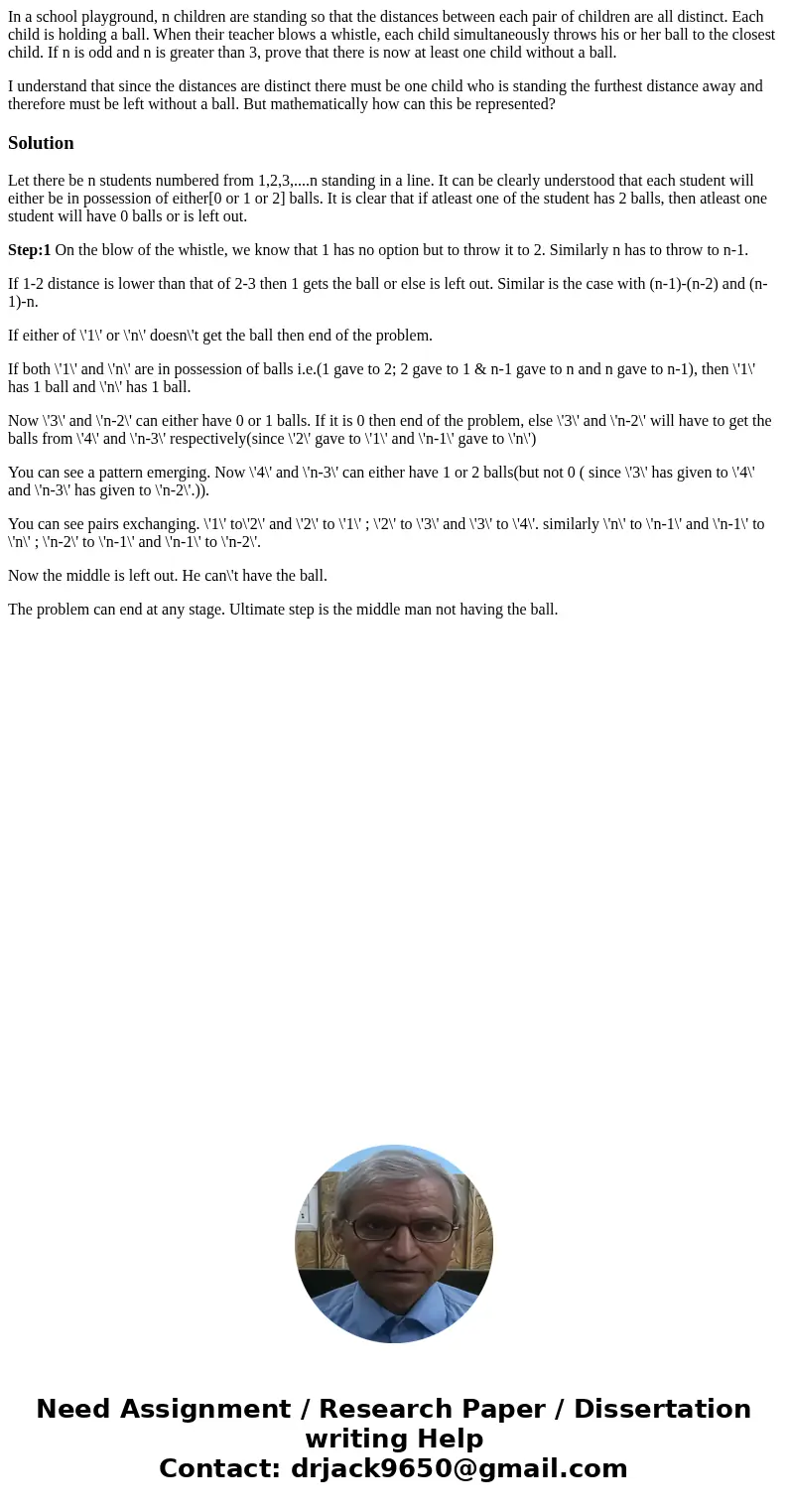In a school playground n children are standing so that the d
In a school playground, n children are standing so that the distances between each pair of children are all distinct. Each child is holding a ball. When their teacher blows a whistle, each child simultaneously throws his or her ball to the closest child. If n is odd and n is greater than 3, prove that there is now at least one child without a ball.
I understand that since the distances are distinct there must be one child who is standing the furthest distance away and therefore must be left without a ball. But mathematically how can this be represented?
Solution
Let there be n students numbered from 1,2,3,....n standing in a line. It can be clearly understood that each student will either be in possession of either[0 or 1 or 2] balls. It is clear that if atleast one of the student has 2 balls, then atleast one student will have 0 balls or is left out.
Step:1 On the blow of the whistle, we know that 1 has no option but to throw it to 2. Similarly n has to throw to n-1.
If 1-2 distance is lower than that of 2-3 then 1 gets the ball or else is left out. Similar is the case with (n-1)-(n-2) and (n-1)-n.
If either of \'1\' or \'n\' doesn\'t get the ball then end of the problem.
If both \'1\' and \'n\' are in possession of balls i.e.(1 gave to 2; 2 gave to 1 & n-1 gave to n and n gave to n-1), then \'1\' has 1 ball and \'n\' has 1 ball.
Now \'3\' and \'n-2\' can either have 0 or 1 balls. If it is 0 then end of the problem, else \'3\' and \'n-2\' will have to get the balls from \'4\' and \'n-3\' respectively(since \'2\' gave to \'1\' and \'n-1\' gave to \'n\')
You can see a pattern emerging. Now \'4\' and \'n-3\' can either have 1 or 2 balls(but not 0 ( since \'3\' has given to \'4\' and \'n-3\' has given to \'n-2\'.)).
You can see pairs exchanging. \'1\' to\'2\' and \'2\' to \'1\' ; \'2\' to \'3\' and \'3\' to \'4\'. similarly \'n\' to \'n-1\' and \'n-1\' to \'n\' ; \'n-2\' to \'n-1\' and \'n-1\' to \'n-2\'.
Now the middle is left out. He can\'t have the ball.
The problem can end at any stage. Ultimate step is the middle man not having the ball.

 Homework Sourse
Homework Sourse